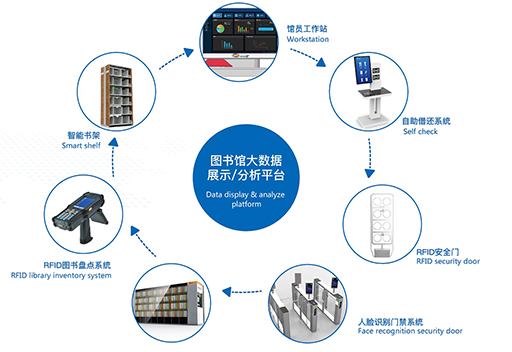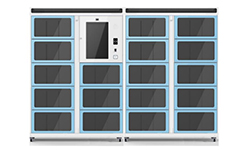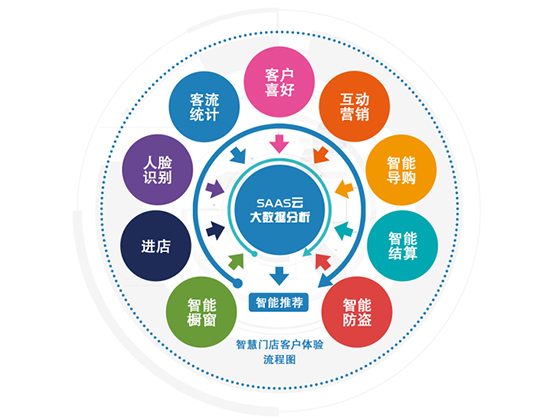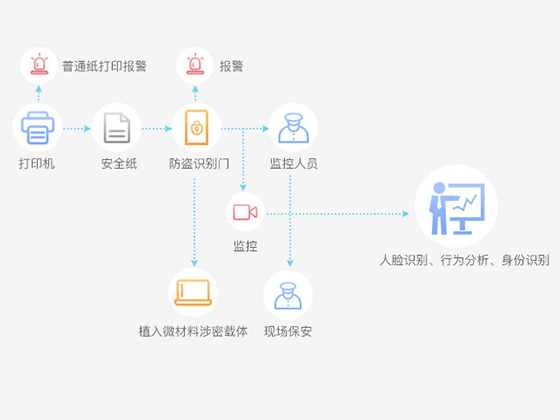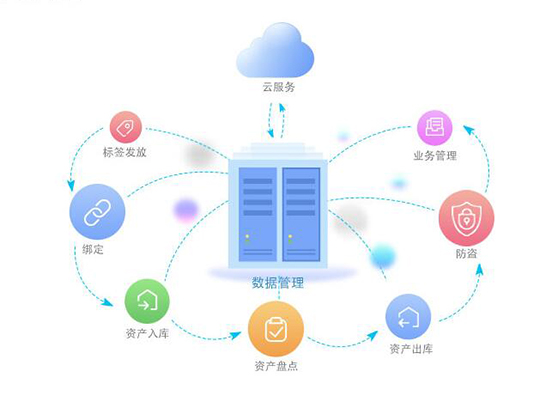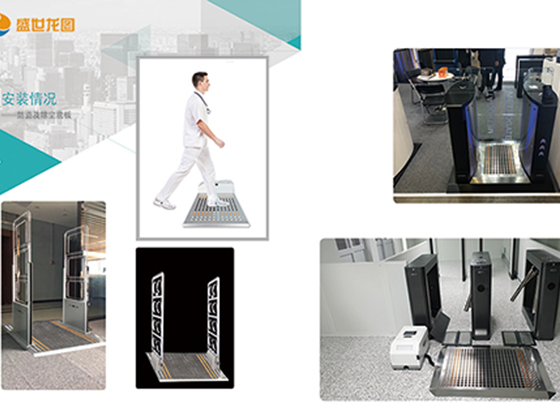SSLT provides big data analysis system for library through intelligent terminal of high frequency, ultra high frequency RFID technology, EAS technology and eas + RFID hybrid technology.
Radio frequency identification (RFID) is a type of automatic identification technology. It uses wireless radio frequency to perform non-contact two-way data communication, and uses radio frequency to read and write recording media (electronic tags or radio frequency cards) to achieve Identifying the purpose and purpose of the data exchange.
The RFID system consists of two parts:software control system and hardware identification system. The software control system is mainly used to process and analyze the information collected by the hardware identification system, and to make an alarm arrangement. The hardware identification system includes three main components: reader, antenna, and electronic tag.
Radio frequency identification technology can be divided into three types according to the power supply method of its tags, namely passive RFID, active RFID, and semi-active RFID.
1. Passive RFID.
Among the three types of RFID products, passive RFID is the earliest and most mature, and its applications are also the most widespread. In passive RFID, the electronic tag completes the information exchange by accepting the microwave signal transmitted by the radio frequency identification reader and obtaining energy through the electromagnetic induction coil to temporarily supply power to itself. Because the power supply system is eliminated, the volume of passive RFID products can reach the order of centimeters or even smaller, and its simple structure, low cost, low failure rate, and long service life. But as a cost, the effective identification distance of passive RFID is usually short, and it is generally used for contact recognition at close range. Passive RFID mainly works in the lower frequency bands of 125KHz, 13.56MKHz, etc. Its typical applications include: bus cards, second-generation ID cards, cafeteria meal cards, etc.
2. Active RFID。
Active RFID has not been around for a long time, but it has played an indispensable role in various fields, especially in highway electronic toll collection systems. Active RFID is powered by an external power source and actively sends signals to the RFID reader. Its volume is relatively large. But it also has a longer transmission distance and higher transmission speed. A typical active RFID tag can establish contact with a radio frequency identification reader at a distance of 100 meters, and the read rate can reach 1,700 read / sec. Active RFID mainly works in higher frequency bands such as 900MHz, 2.45GHz, 5.8GHz, and has the function of identifying multiple tags at the same time. The long-range and high-efficiency of active RFID makes it indispensable in some applications that require high-performance and large-scale radio frequency identification.
3. Semi-active RFID。
Passive RFID itself does not supply power, but the effective identification distance is too short. The active RFID identification distance is long enough, but it requires an external power supply and is relatively large. And semi-active RFID is the product of compromise for this contradiction. Semi-active RFID is also called low-frequency activation triggering technology. Under normal circumstances, semi-active RFID products are in a dormant state and only power the data-holding part of the tag, so the power consumption is small and can be maintained for a long time. After the tag enters the recognition range of the RFID reader, the reader first activates the tag accurately in a small range with a low-frequency signal of 125KHz to enter the working state, and then transmits information to it through a 2.4GHz microwave. That is to say, first use low-frequency signals to accurately locate, and then use high-frequency signals to quickly transmit data. Its usual application scenario is: in a large range covered by a high-frequency signal, multiple low-frequency readers are arranged at different positions for activating semi-active RFID products. This not only completes the positioning, but also realizes the collection and transmission of information.
SSLT provides products and services with different RFID frequencies according to different scenarios.

